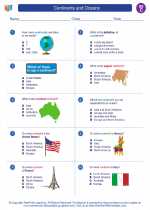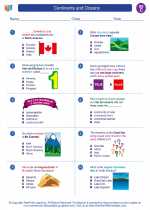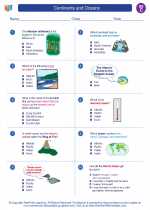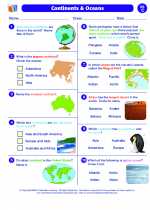Continents and Oceans -> antarctica
Antarctica
Antarctica is the southernmost continent on Earth, located almost entirely within the Antarctic Circle. It is the fifth-largest continent in terms of area, and it is the coldest, driest, and windiest continent. The majority of Antarctica is covered by ice, some of which is more than 4 kilometers thick. The continent is also home to a diverse range of wildlife, including penguins, seals, and various species of birds.
Key Facts about Antarctica
- Location: Southern Hemisphere
- Area: Approximately 14 million square kilometers
- Climate: Extremely cold and dry
- Exploration: The first confirmed sighting of Antarctica was in 1820 by a Russian expedition
- Treaty: The Antarctic Treaty was signed in 1959 to regulate international relations with respect to Antarctica
Geography and Climate
Antarctica is characterized by its icy landscape, with ice covering about 98% of the continent. The continent is divided into two main regions: West Antarctica and East Antarctica. The climate is extremely cold, with temperatures dropping as low as -80°C (-112°F). The continent is also the driest place on Earth, receiving very little precipitation.
Wildlife
Despite its harsh climate, Antarctica is home to a variety of wildlife, including penguins, seals, whales, and seabirds. These animals have adapted to the extreme conditions and play a crucial role in the Antarctic ecosystem.
Human Activity
Antarctica is not permanently inhabited by humans, but it is a hub for scientific research. Several countries operate research stations on the continent to study its unique environment, climate, and wildlife. The Antarctic Treaty System governs human activity on the continent and aims to preserve it for peaceful and scientific purposes.
Study Guide
Here are some key points to remember when studying Antarctica:
- Where is Antarctica located?
- What are the main features of Antarctica's climate?
- What is the significance of the Antarctic Treaty?
- Describe the wildlife that can be found in Antarctica.
- Why is Antarctica an important area for scientific research?
Understanding the geography, climate, wildlife, and human activity in Antarctica is essential for gaining a comprehensive understanding of this unique continent.
[Antarctica] Related Worksheets and Study Guides:
.◂Social Studies Worksheets and Study Guides Third Grade. Continents and Oceans

 Worksheet/Answer key
Worksheet/Answer key
 Worksheet/Answer key
Worksheet/Answer key
 Worksheet/Answer key
Worksheet/Answer key
 Worksheet/Answer key
Worksheet/Answer key
